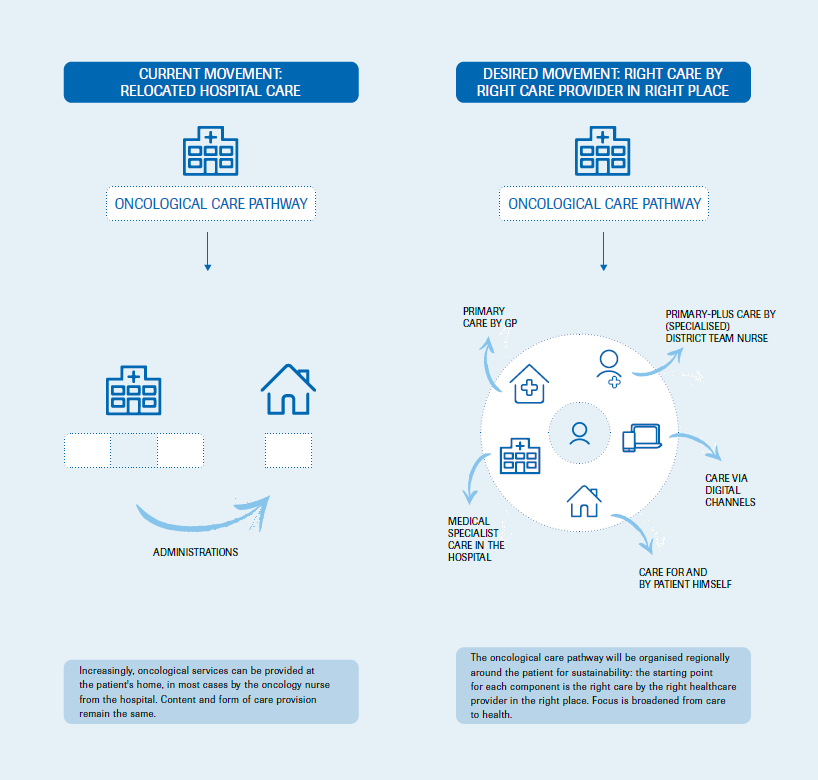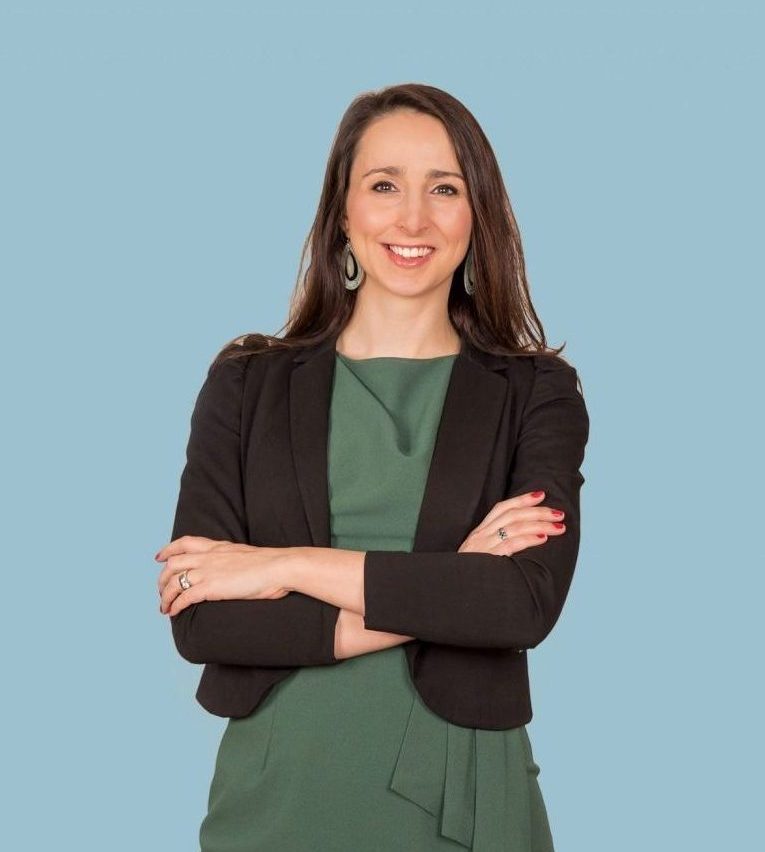Now that the movement of home administration is gaining momentum in even more places in the Netherlands, we need the courage of our convictions and take a bigger step forward to embed this care in a sustainable manner. Geared to our healthcare system and overcoming existing barriers. We would like to discuss this with you. Because only together we can turn these successful pilots into the new normal.
The offer of oncological care at home is growing
In May 2019, white paper part 1 was released, in which our experiences with setting up oncological care at home pilots are bundled. Meanwhile, the pilot phase has been completed in the three partner hospitals, Martini Hospital, Tergooi and St. Antonius. Oncological hospital care at home has been offered long before this project. There are more and more examples that show that the Netherlands is busy fulfilling the need and necessity for care closer to home or care at home. The Covid-19 pandemic has added another argument: home treatment relieves the burden of care in the hospital and limits possible infection risks. This is relevant for people who are particularly vulnerable, for example due to cancer.
Care@Home is part of a larger transformation
Despite these movements and the positive feedback from both patients and healthcare providers, hospitals and healthcare insurers sometimes decide not to start, not to scale up or even stop with home administrations. In most cases, the financing and cost-effectiveness of this form of care is the stumbling block.
When costs and financial revenues of administration in the hospital and at home are compared, the business case for the hospital is still negative at the moment, due to higher costs of care at home and less efficient deployment of nursing staff. As a result, this type of care does not seem desirable, considering the rising healthcare costs and staff shortages.
However, a business case covers more than hospital finances; it also includes the added value for the patient, the healthcare providers, the hospital and society at large. In addition, medical and digital developments will contribute to making care at home more cost-efficient. The business case and the implementation of the care concept should be placed in a broader perspective; for example, by looking at the right care in the right place for the entire care pathway, and in the context of regionalisation of care. After all, Care@Home is part of a larger transformation in Dutch healthcare, namely the ‘right care in the right place’.
With this in mind, this second part of the white paper examines the results of the pilots, the discussion around the business case and alternative concepts. The following question is of central importance:
How do we go from successful Care@Home pilots to the new normal?
Sustainable solutions for healthcare
For this paper, we spoke to various stakeholders about their perspective on a sustainable design of Care @ Home. There are various options for the right care, the right care provider and the right place that can contribute to successful and sustainable upscaling. In the interview with Zilveren Kruis they share their perspective on the business case and also future developments. The complex financing and the importance of broadening the perspective was central to the RocheDialogues @ Home of 30 June 2020. We also spoke with Erasmus MC and Care4homecare about how alternative options are already being successfully applied in practice.


However, the continuation of the successful pilots must go much further than scaling up. Together we have to look for a sustainable concept that fits the current challenges in healthcare and make optimal use of available innovations. For this we have to think outside the existing frameworks. After all, patients will receive much more care at home or closer to home in the coming years. However, the various stakeholders in the field will have to work together to make this possible. In this white paper, we shared a number of schools of thought that we want to discuss with the field:
- Place the Care @ Home concept in a broader perspective
- Develop transmural financing models for integrated care
- Providing insight into the added value of home administration by means of data
- Making concrete choices in healthcare



